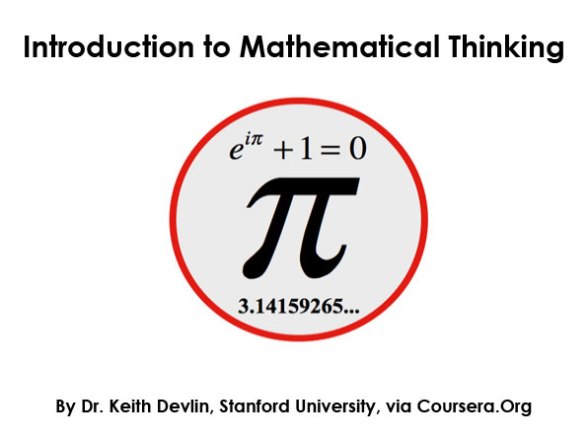Well well, I am now on week two of: Introduction To Mathematical Thinking, a free and open course offered online via Coursera.org, which is taught by Dr. Keith Devlin of Stanford University.
The course is geared to teach you how to think mathematically, and more to the point, I think what is meant by that is how to problem solve and communicate with precision, excluding ambiguity from your processes and statements. Which makes sense, in math the answer is either wrong or right, true or false, so communicating in a precise manner would be essential to correctness.
So far, I have understood parts of the assignments and quizzes, and failed miserably at other parts. Example, never before have I seen the symbols for And, Or, & Not in mathematics:
As you can see from these math problems, the symbols are a capital V for “Or”, and an inverted or upside down capital ^ for “And” and a negative sign with a hook on the end, which means “Not”. Also new to me were the symbols for Phi, and Psi:
I believe we are simply using these Greek letters as variables, but I am honestly not 100% sure of this, which in hindsight is a question I should of asked by now on the Discussion Forum. After all, peer review and group study is the core concept of this online course, or MOOC, which seems to be the new buzzword for these types of classes offered online to masses of people around the world.
I need to do more “dirty work” and get down to writing out the problems and figuring them out repeatedly. This first week I did not devote enough time to actually doing the material myself, which I am humbled to report has manifested itself in my first test score on Problem Set 1, in which I scored a total of 10 out of 21 correct, and was then deducted 2 points for completing the test a day late.
So, I dismal score of 8/21 on the first test. This convinced me to pay more attention to the lectures, spend more time on the forums and Facebook study groups, and most importantly, I need to actually do the problems multiple times and practice the new concepts for I have clearly failed to firmly grasp them this first week.
Now, I never made it to Pre-Calculus in high school, so I am not well versed in mathematics anyways, especially since this is the first math course I have taken in 8 years, but it is supposed to be a transitional course from high school mathematics to university mathematics.
Clearly, this is a course I need if I am to accomplish my goal of becoming capable of high level mathematics and I am grateful to Coursera.org, Stanford, and Dr. Devlin and his team for the opportunity to take this course and to learn as much as possible from it.
Whether or not I receive a passing grade is inconsequential to me, for learning the material is all that matters and which is the most important to me, though, a certificate of completion from Stanford University would put a smile on my face, for sure.
I am still progressing in my other areas of self-improvement, and I will try to update everyone on those soon, I just have been so busy with all this work and courses and life, that I have admittedly been neglecting this blog.
Take care, and remember, it is never too late to learn something new, never.



Thank you for the Like, Patrick!